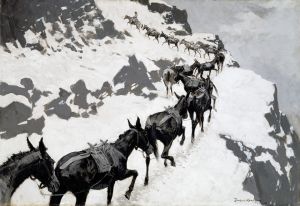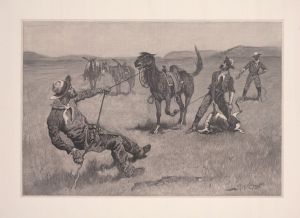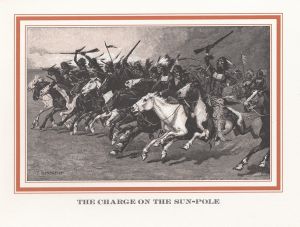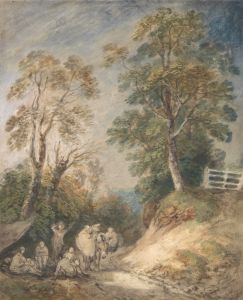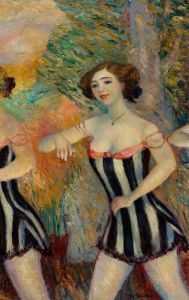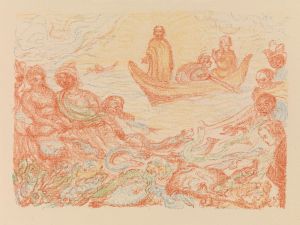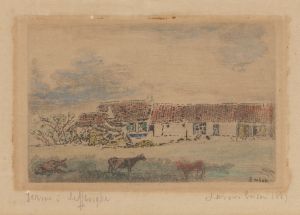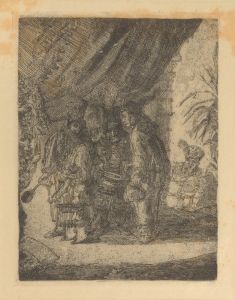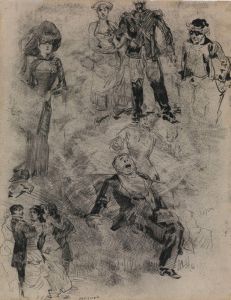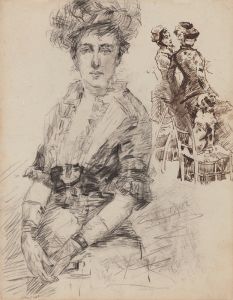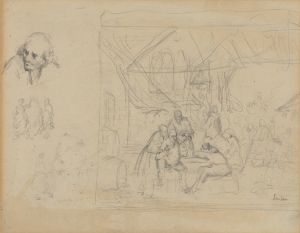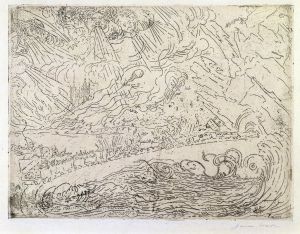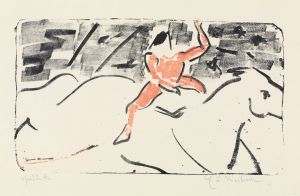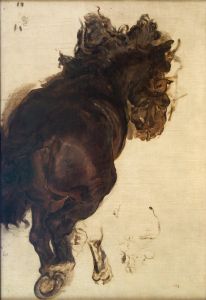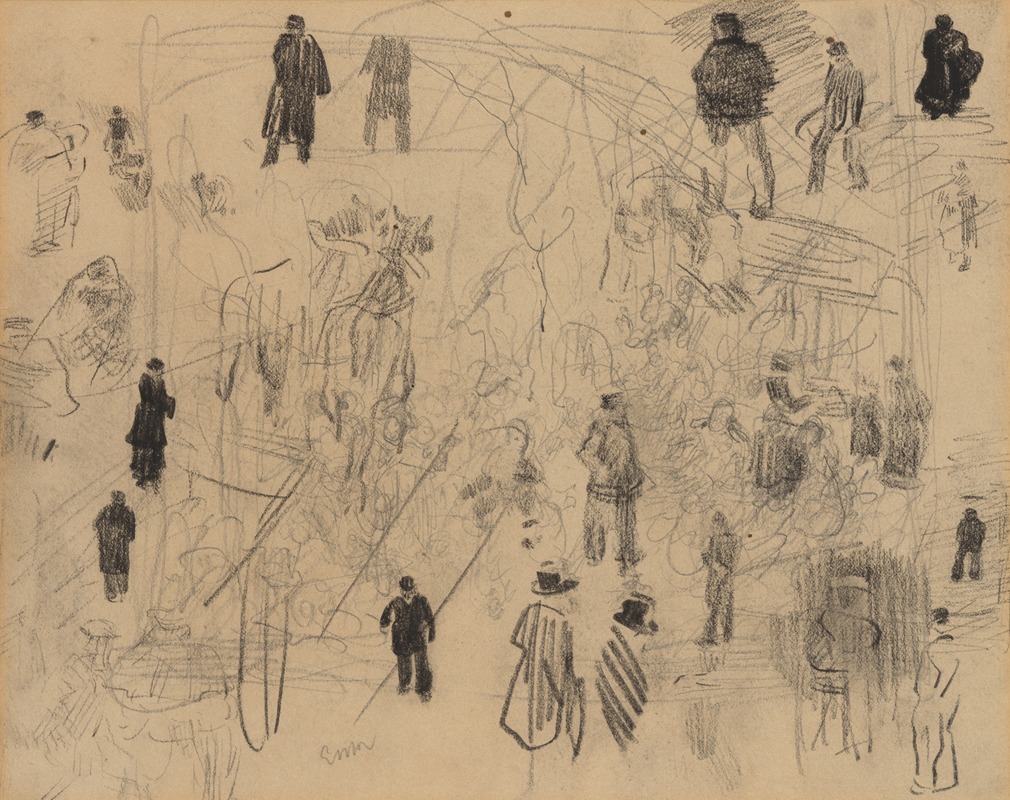
Schetsen van figuren en paarden
A hand-painted replica of James Ensor’s masterpiece Schetsen van figuren en paarden, meticulously crafted by professional artists to capture the true essence of the original. Each piece is created with museum-quality canvas and rare mineral pigments, carefully painted by experienced artists with delicate brushstrokes and rich, layered colors to perfectly recreate the texture of the original artwork. Unlike machine-printed reproductions, this hand-painted version brings the painting to life, infused with the artist’s emotions and skill in every stroke. Whether for personal collection or home decoration, it instantly elevates the artistic atmosphere of any space.
James Ensor, a prominent Belgian painter and printmaker, is known for his unique and often avant-garde contributions to the art world during the late 19th and early 20th centuries. His work "Schetsen van figuren en paarden" (translated as "Sketches of Figures and Horses") is one of the many pieces that showcase his distinctive style and thematic interests. Ensor's art is characterized by its bold use of color, innovative techniques, and often satirical or fantastical subject matter.
Ensor was born in 1860 in Ostend, Belgium, and spent most of his life there. His early exposure to the eclectic mix of objects in his family's curiosity shop, which included carnival masks, exotic artifacts, and other unusual items, greatly influenced his artistic vision. This influence is evident in many of his works, which often feature grotesque figures, masks, and a carnival-like atmosphere.
"Schetsen van figuren en paarden" is a testament to Ensor's skill in capturing movement and expression through sketching. Although specific details about this particular work are limited, it is consistent with Ensor's broader oeuvre, which frequently explores themes of social commentary, the absurd, and the macabre. His sketches often serve as studies for larger works or as standalone pieces that convey his immediate impressions and ideas.
Ensor's technique in sketching is notable for its fluidity and dynamism. He often used quick, expressive lines to capture the essence of his subjects, whether they were human figures, animals, or fantastical creatures. Horses, a common subject in art, are depicted with a sense of motion and vitality in Ensor's sketches, reflecting his keen observational skills and ability to convey energy and life.
Throughout his career, Ensor was associated with the avant-garde group Les XX (The Twenty), which was instrumental in promoting modern art in Belgium. His work, however, often stood apart from his contemporaries due to its unique blend of realism and fantasy, as well as its critical edge. Ensor's art was not always well-received during his lifetime, with some critics finding his use of color and subject matter challenging or unsettling. Nevertheless, his influence on later artists, particularly those associated with Expressionism and Surrealism, is widely recognized today.
In addition to his paintings and sketches, Ensor was also an accomplished printmaker. His etchings and lithographs further demonstrate his mastery of line and his ability to convey complex themes through simple yet powerful imagery. Ensor's legacy is that of an artist who pushed the boundaries of traditional art forms and challenged societal norms through his work.
"Schetsen van figuren en paarden" fits within this broader context of Ensor's artistic exploration. While specific information about this work may be scarce, it undoubtedly reflects the innovative spirit and distinctive style that define James Ensor's contribution to the art world. His ability to blend the real with the fantastical, the beautiful with the grotesque, continues to captivate audiences and inspire artists to this day.





